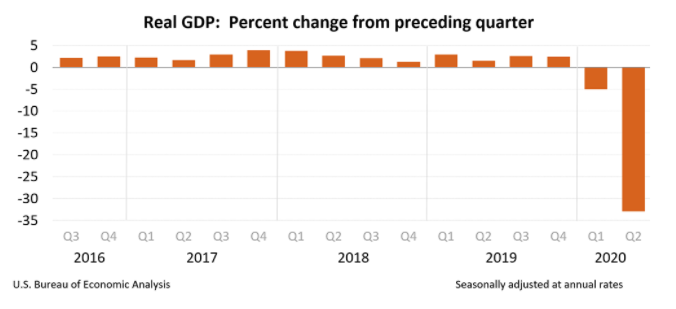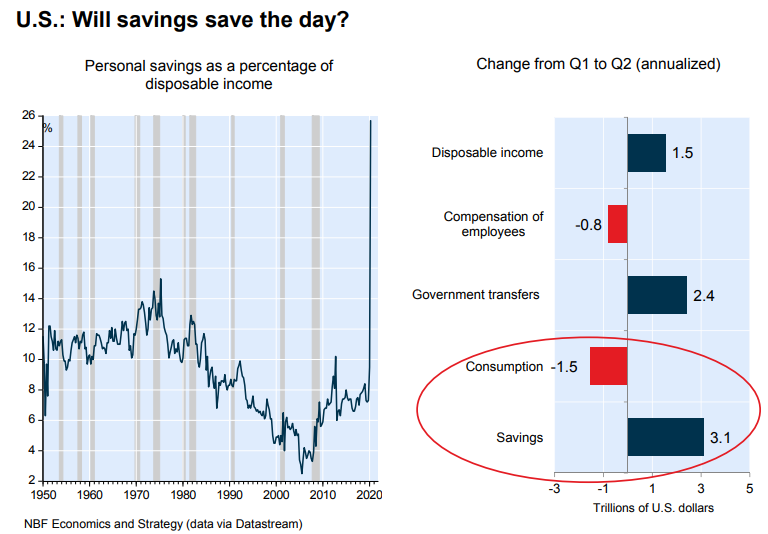An Unconventional US Recession, An Unconventional Recovery And The New Economic Normal?
The pandemic and the lockdowns decimated the US economy in the second quarter of this year.
Though the consensus expectation of economists continues to be that the US economic growth would revive in the third and fourth quarters of this year, American GDP growth is also expected to be terribly slow in most of 2021.
Of course, there is considerable uncertainty surrounding this consensus view, depending upon the many unknowns related to the spreading pandemic and the finding of an acceptable vaccine.
America’s real GDP declined at a 32.9% annual rate in the second quarter of this year, the steepest economic contraction since the 1930s Great Depression.
There were equally steep Q2 contractions in virtually all of the spending sectors of the US economy -- consumption, business investment, housing construction, exports, and imports.
State and local government expenditures declined sharply in the second quarter, though federal government spending rose dramatically in the same period. Indeed, because of the earlier large federal government supports, personal incomes rose in Q2 despite the huge spike in unemployment.
That is, household disposable income surged 33% in Q2 because of transfer payments from the Trump Administration.
With limited spending options in Q2, the personal savings rate rose to a record high of 25.7%. As the second chart below indicates, the increase in savings of $3.1 trillion in Q2 was twice the drop in consumer spending. This suggests support for a consumer spending rebound in Q3.
As already noted, the consensus view expects the US economy to rebound a bit in Q3 and Q4, and then grow slowly in 2021.
For example, the Conference Board expects a rebound of about 26% (SAAR) in Q3 and a fourth-quarter contraction of 1.6%.
In the Conference Board view, the economy shrinks about 4.9% in 2020 and recovers about 2% in 2021. Other organizations also project the 2020 contraction to be in roughly the same range.







Thanks for your comments.
The US has always had a problem dealing with its poor.
The problem became more exaggerated by recent events, including the covid recession.
This article points out that the economic stimulus checks did not produce the desired effects, which I did not think it would. While many folks certainly are suffering because of the shutdowns, far more folks are not suffering financially. So after taking thought it becomes clear that the main goal of all that stimulus was to protect profits and share prices.
Protecting only the unfortunate folks will certainly need a lot more effort, but it could even be cost effective, and contribute far less to both government debt and general inflation. What we have now almost seems like a "hidden agenda" effort to protect those 1% friends of various un-named leaders.